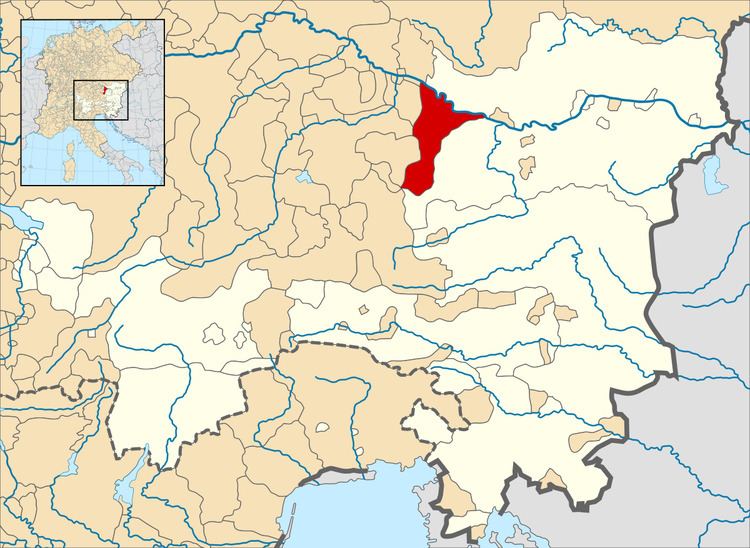Government Grafschaft (county) Fealty sworn to Austria 2 February 1383 Disestablished 10 August 1572 | First recorded mention of the Schaunbergers as counts 1316 Male Schaunberger line extinct 1559 Date dissolved August 10, 1572 | |
 | ||
Capital Castle Schaunberg, Hartkirchen | ||
The County of Schaunberg (German: Grafschaft Schaunberg; also Schaumberg) was a state of the Holy Roman Empire, located in present-day Upper Austria. It roughly corresponded to the modern Hausruckviertel. Its seat was the castle of Schaunberg, Hartkirchen.
The Schaunbergers, who are descended from lords of Julbach (am Inn), were granted the lucrative imperial fief of Aschach an der Donau by Kaiser Friedrich Barbarossa in the middle of the 12th century. A few years later (documentary evidence suggests 1160) Heinricus de Scovenberch erected a castle not far from Aschach, which became the eponymous centre of the territory. Over the course of the 13th century the Schaunbergers built up a Vogtei (bailiwick), particularly my means of high jurisdiction, (over the Cistercian Wilhering Abbey) and church patronage, mainly between Kürnberg, Sauwald, the Danube and Hausruck. Documents from 1316 already refer to the Schaunbergers as Grafen (counts), and speak of the territory as "terra nostra"; it was a Grafschaft (county) with a Landrecht and a special position in Upper Austria. The town Eferding, which the Schaunbergers bought from the Bishop of Passau in 1367, took a significant upturn under their rule.
1380 Duke Albert III of Austria decided to try to put an end to the Schaunbergers independence. In the Schaunberger Feud (1380–1390) he occupied all of their castles on the Danube as well as the town of Eferding, though his siege Castle Schaunberg proved fruitless. Nevertheless, Heinrich von Schaunberg had to concede defeat and swear fealty to the Austrian Duke. This defeat was secured by series of agreements, including the arbitration of 2 February 1383 through a court of imperial princes. By 1388 however Count Heinrich once again felt strong enough to rebel against the Habsburgs; after varying success he finally submitted and had to finally swear fealty the Duke in 1390.
The Schaunbergers continued to claim a certain position for around a century. Among other things Friedrich V von Schaunberg was between 1489 and 1494 Prince-Archbishop of Salzburg. With the succession of the Austrian Habsburgs to the imperial throne (Friedrich III and then Maximilian I), the special rights of the Schaunergers were finally curtailed; in 1548 during the Reformation the Schaunbergers lost their voting rights in the Imperial Diet upon becoming Lutheran, and in 1559 the male line died out upon the death of Count Wolfgang von Schaunberg, after which the title was inherited by the Starhembergers through his sister Anna.
After the extinction of the male line of Schaunbergers, the fief was, through a compromise with Kaiser Maximilian I on 10 August 1572, mortgaged to the Starhembergs and the Liechtensteiners, requiring 45,000 Gulden for repayment, and ceding of the district court and Wildbannforst in the Danube Valley.
The term Landl, which was the name of the Hausruckviertel until the 18th century, originates in the County of Schaunberg.
Counts of Schaunberg (after 1382)
The counts of Schaunberg trace their origins to Edlen von Julbach. They were also known by the name von Schaunburg from the time of Heinrich IV (Henricus comes de Scounberch; 1316) onwards. Due to the growth of the goods produced in what is today the Innviertel, the Julbach-Schaunbergs relocated their seat to Castle Schaunburg. In 1382 Count Heinrich von Schaunberg sold the lordship of Julbach, their former seat, to house Wittelsbach, after which they were exclusively known by the name von Schaunburg.
